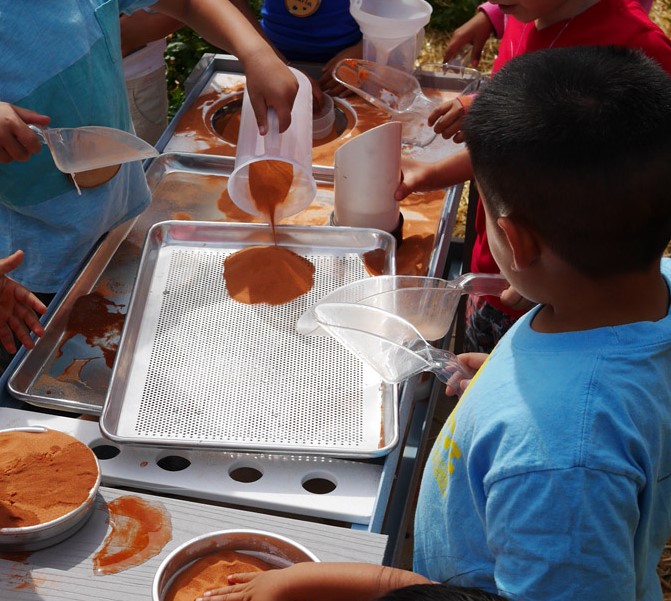Irresistible Materials
Most young children love squishy, messy, slimy, and gooey things. Very few can resist a stomp through a puddle, or the satisfaction of mixing up a really nice mud pie. There’s something compelling about the feel of soft warm sand, sudsy water, or cool crisp leaves. It’s no wonder sensory play and exploration are a staple in early childhood programs. And it’s no surprise that natural sensory materials like sand and water can be both calming and energizing, resulting in focused sustained engagement.
Arranging Your Sand and Water Space
Keep in mind that in a sand and water space a little can go a long way. If space is an issue, sturdy shallow bins can substitute nicely for a sand and water table. Materials only need to be a couple of inches deep for children to have engaging experiences. Tools are key for children to uncover math and earth science concepts. Cups, bowls, pitchers, funnels, and utensils for mixing and measuring top the list. A good supply of these will ensure enough for several children, support them to practice mathematical language, and “play” with concepts such as more, less, full, empty, thick, thin, and so much more. When children use tools for pouring, sifting, shaping, and scooping, they practice fine motor movement and hand-to-eye coordination, both prerequisites for writing and drawing.
Less Is More
Though tools are essential for enriching sand and water exploration, a common mistake is to fill up the table or material bins with too many. Place just two or three tools in with the sensory materials. Arrange the rest nearby on a shelf or in buckets close to the actual sensory lab, table, or bins. This way children are offered opportunities to make choices and think critically about the tools they wish to use. As an added benefit, you’ll be afforded the opportunity to observe those choices, and model and introduce tools over time as interests change and children mature developmentally.
Sensory Play Every Day
Sand, water, and sensory exploration can and should be offered each day indoors or out. Each environment will have a certain degree of influence on how children behave and interact with one another. Spaces arranged indoors may yield negotiation and cooperative play while outdoor spaces naturally invite children to fill the space with their voices and movements. Regardless of where you set up a sand and water exploration space, these areas are particularly important for social development, spontaneous investigations, inquiry, and focused engagement. Every day is a day for sensory play.
Learn about Kodo’s curated collections for sand, water, and sensory explorations here.


